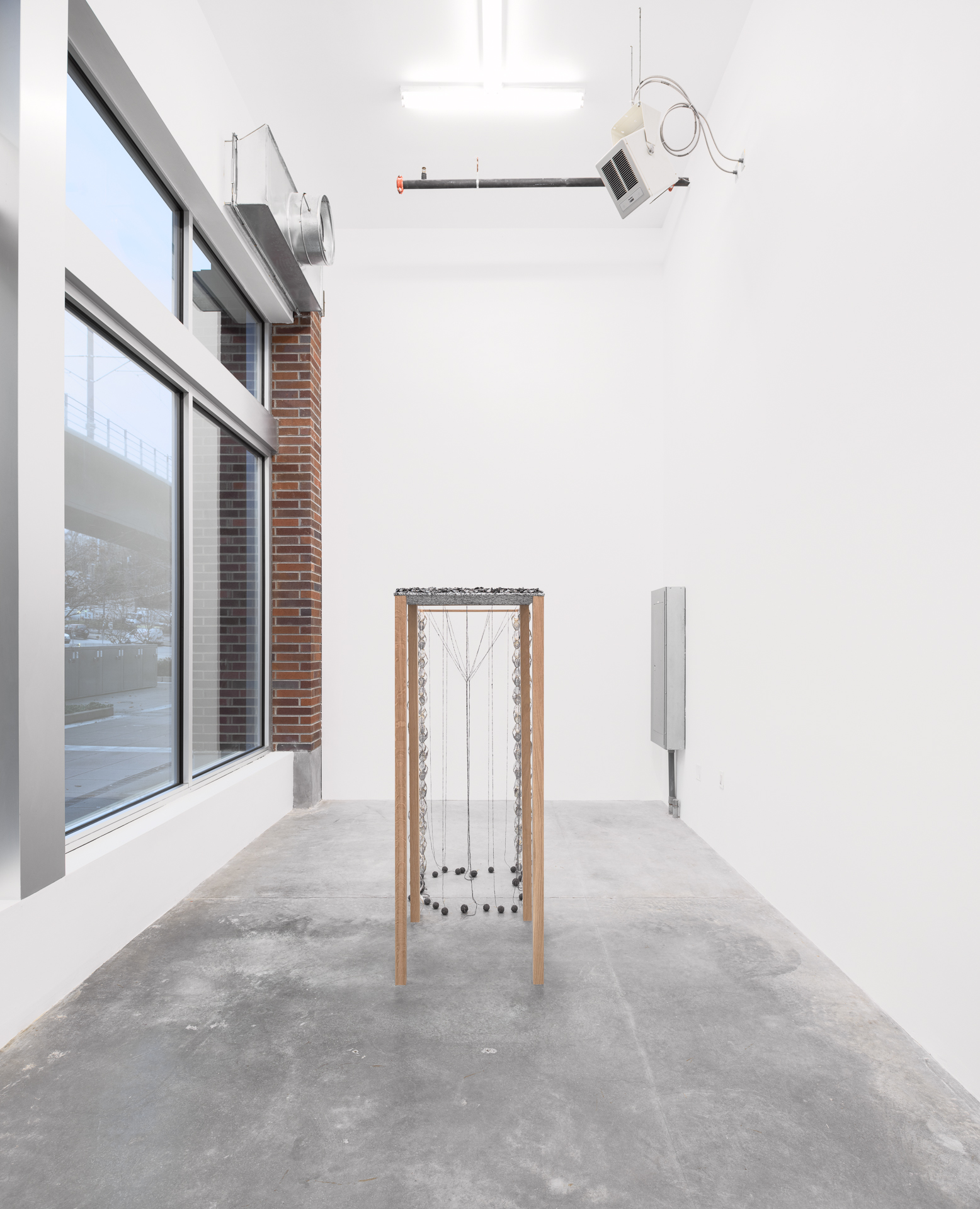Matt Browning
Moving-Metal
January 6 - March 10, 2018
Trees are composed of cellulose, hemicellulose, and lignin. Cellulose fibers are the long, structural and nutrient transporting fibers of wood. Hemicellulose fills in the gaps between the cellulose fibers, and lignin binds the matrix together.
To produce paper, wood is cooked for several hours in a solution of multiple sodium composites that dissolve the lignin and hemicellulose into a thick black tar and render out flexible cellulose fibers. The fibers are harvested, the tar is burned to power the mill; processing chemicals are recovered with only a small loss in volume and, replenished with sodium salts, returned to the wood digester for reuse.
In this cycle, stored energy in the form of wood is chemically split into material (cellulose) and forces (burning lignin, electric power), which recombine in the production of paper. Due to its strength, long cellulose is most often used to produce protective packaging for other products, which are loaded into larger containers and set into motion on global supply lines.
Congealed solar energy from refined decomposed plants is combusted to transport these products from one place to another. In the case of maritime logistics, propulsive energy is abetted by protective energy, harnessed to shield ships (larger containers of boxes of products) from the corrosiveness of the sea. Protective energy is supplied by small sacrificial anodes, produced from metals of a greater negative charge than the metal they are tasked to protect, and affixed to the hulls and propellers of boats. Through use the anodes dissolve, releasing energy into the sea as they protect the larger and more valuable components.
The most common metal for marine applications is zinc. Its negative charge will protect brass, steel, and aluminum without deteriorating as rapidly as its magnesium freshwater counterpart. From sacrificial anodes to galvanization, zinc usually sits on surfaces to prevent structural deterioration. In an inversion of place, zinc is also the core metal of (36 y.o. and younger) pennies, the smallest objectified denomination of circulating American currency. Cheaper than copper, and with a much lower melting point, a zinc core makes newer pennies only slightly more expensive to produce than their actual exchange value.
In The Periodic Table, Primo Levi chided zinc for being a, “boring metal.” He explains that zinc, “is not an element which says much to the imagination, it is gray and its salts are colorless, it is not toxic, nor does it produce striking chromatic reactions... ...It has been known to humanity for two or three centuries, so it is not a veteran covered with glory like copper, nor even one of those newly minted elements which are still surrounded with the glamour of their discovery.” In the absence of glory and glamor (meaning), zinc is strictly a protectant/placeholder metal: its value coming from its relative valuelessness. It is a metal enlisted to delay or prevent loss. Heating a newer penny transforms it into a copper sac full of molten zinc, which can be flicked out to produce a metallic gesture. A cluster of these gestures could constitute a charged artwork—self-hedged against its impending dissolution.
—Matt Browning
Matt Browning lives and works in Vancouver, BC, and Bainbridge Island, WA. His work concerns time, latency, and the selective and hierarchical valuations of human activity. Browning received his BFA from the University of Washington in 2007 and his MFA from the University of British Columbia in 2017. Recent exhibitions include the Whitney Museum of American Art, New York, the Vancouver Art Gallery, Vancouver, and the Or Gallery, Vancouver. He is currently pursuing a practice-based PhD in the Institute of Gender, Race, Sexuality, and Social Justice at the University of British Columbia in Vancouver.
Untitled
Copper, steel, zinc, wool, and oyster shells on oak















